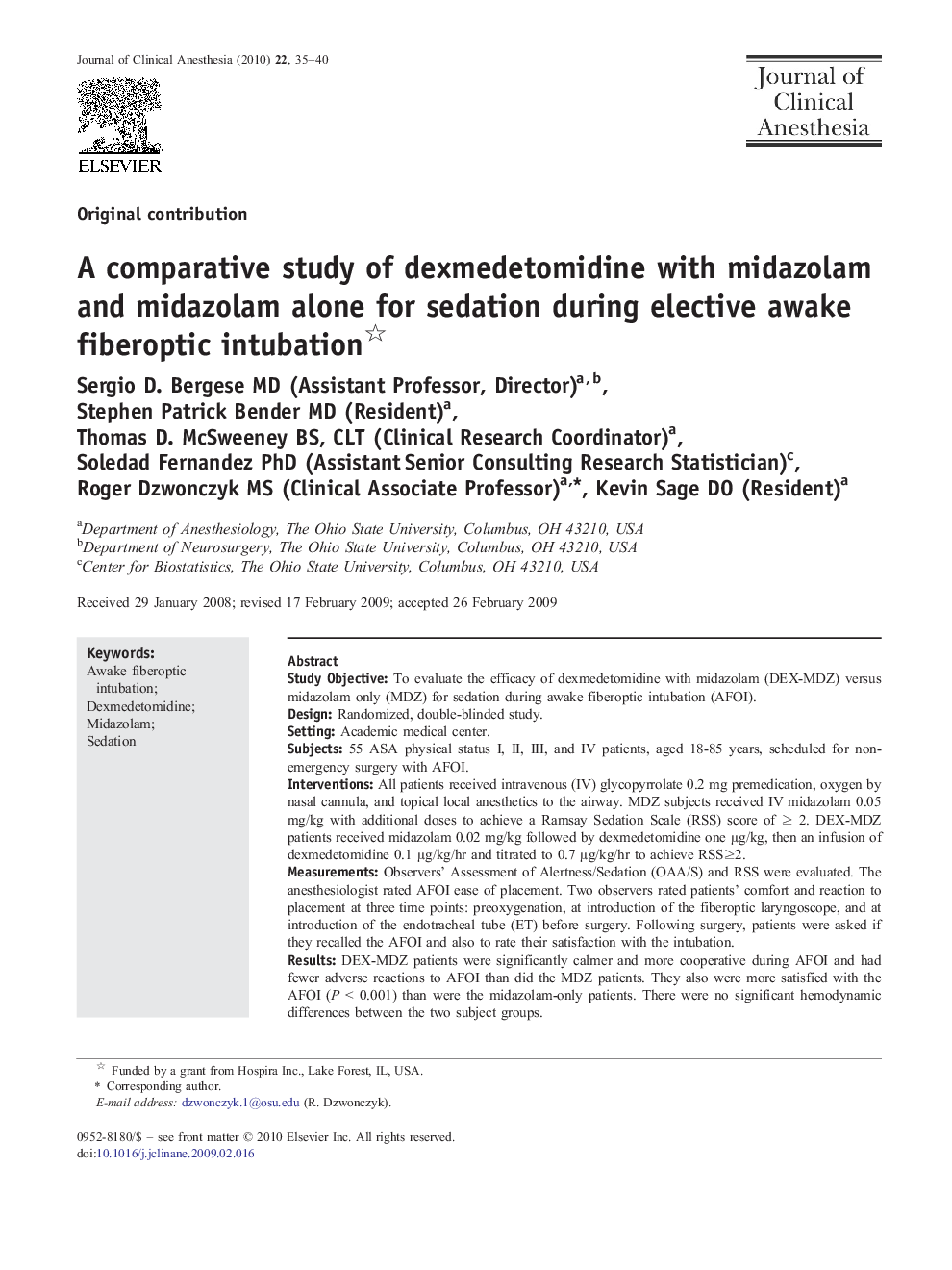| Article ID | Journal | Published Year | Pages | File Type |
|---|---|---|---|---|
| 2763850 | Journal of Clinical Anesthesia | 2010 | 6 Pages |
Study ObjectiveTo evaluate the efficacy of dexmedetomidine with midazolam (DEX-MDZ) versus midazolam only (MDZ) for sedation during awake fiberoptic intubation (AFOI).DesignRandomized, double-blinded study.SettingAcademic medical center.Subjects55 ASA physical status I, II, III, and IV patients, aged 18-85 years, scheduled for non-emergency surgery with AFOI.InterventionsAll patients received intravenous (IV) glycopyrrolate 0.2 mg premedication, oxygen by nasal cannula, and topical local anesthetics to the airway. MDZ subjects received IV midazolam 0.05 mg/kg with additional doses to achieve a Ramsay Sedation Scale (RSS) score of ≥ 2. DEX-MDZ patients received midazolam 0.02 mg/kg followed by dexmedetomidine one μg/kg, then an infusion of dexmedetomidine 0.1 μg/kg/hr and titrated to 0.7 μg/kg/hr to achieve RSS≥2.MeasurementsObservers' Assessment of Alertness/Sedation (OAA/S) and RSS were evaluated. The anesthesiologist rated AFOI ease of placement. Two observers rated patients' comfort and reaction to placement at three time points: preoxygenation, at introduction of the fiberoptic laryngoscope, and at introduction of the endotracheal tube (ET) before surgery. Following surgery, patients were asked if they recalled the AFOI and also to rate their satisfaction with the intubation.ResultsDEX-MDZ patients were significantly calmer and more cooperative during AFOI and had fewer adverse reactions to AFOI than did the MDZ patients. They also were more satisfied with the AFOI (P < 0.001) than were the midazolam-only patients. There were no significant hemodynamic differences between the two subject groups.ConclusionsDexmedetomidine in combination with low doses of midazolam is more effective than midazolam alone for sedation in AFOI.
